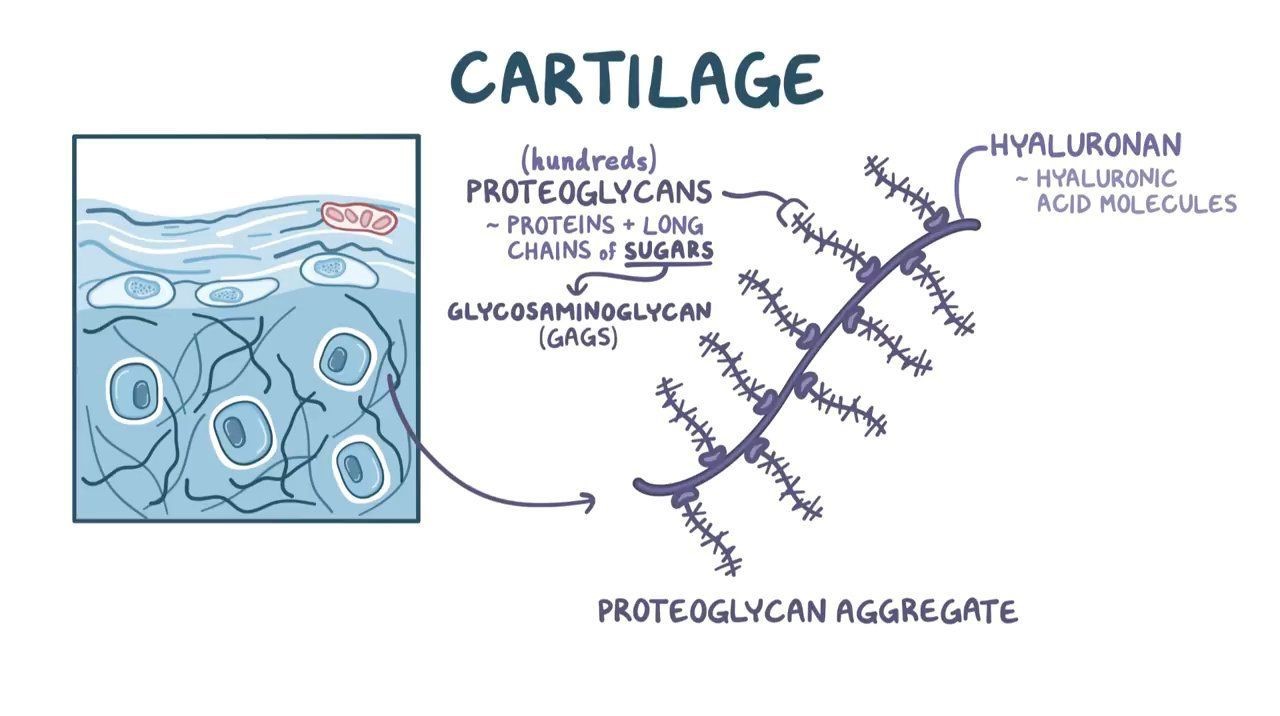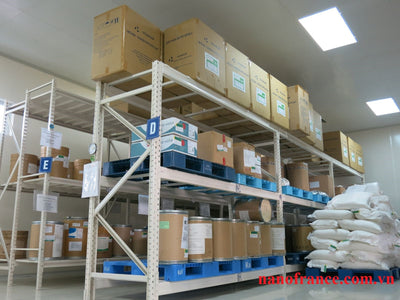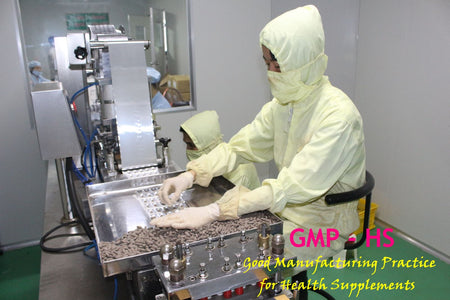Taking care of bone and joint health with micronutrients
Osteoarthritis is a disease that is becoming more and more common and younger. Osteoarthritis causes many dangerous complications if not detected and treated early. Besides the common arthritis treatment with non-steroidal anti-inflammatory drugs, treatment with chondroprotectives or micronutrients (antioxidants and omega-3 fatty acids) is a promising therapy.
Numerous clinical studies have demonstrated that targeted use of selected micronutrients results in more effective reduction of arthritis symptoms, with fewer side effects.
Risk of Osteoarthritis
Osteoarthritis is a disease caused by the gradual loss of cartilage, remodeling of bone around the joint, and inflammation of the synovial membrane.
The nature of osteoarthritis is due to the breakdown of the cartilage collagen matrix, the water content in the cartilage increases. Along with the gradual loss of proteoglycans, the elasticity of the cartilage gradually decreases. This is followed by the gradual loss of cartilage, the formation of osteoblasts and calcium deposition. From there, bone cells continue to limit the flexibility of the joint.
Some risk factors for osteoarthritis include:
Aging
One of the main risk factors for osteoarthritis is age. During aging, articular cartilage softens, and the ability to regenerate and repair the cartilage extracellular matrix decreases with age. Aging also leads to a decrease in muscle mass and strength. This reduces joint stability, leading to joint displacement and cartilage degeneration.
Overweight and obesity
A recent meta-analysis looked at the comorbidities associated with overweight and obesity. It showed that being overweight and obese leads to a significantly higher risk of arthritis.
Hereditary
Several genetic abnormalities have been identified as responsible for the onset and progression of OA. These gene variations result in defects or alterations in cartilage and the composition of the cartilage extracellular matrix.
Other causes
Patients with developmental dysplasias of the joints, such as hip dysplasia, develop arthritis much earlier than normal people.
Additionally, injuries involving the joint surface, injured ligaments, or meniscectomy, have also been implicated in the development of arthritis.

Images of normal (left) and damaged (right) articular cartilage
Although the underlying causes of arthritis differ, they all result in similar clinical symptoms. Some common symptoms include cartilage destruction, bone remodeling, bone formation, synovitis, pain, and immobility.
Taking care of bone and joint health with micronutrients
To understand the structurally modifying effects of different nutrients and how they can support cartilage regeneration, it is important to know the composition of cartilage and the metabolic mechanisms involved in normal metabolism.
Basic structure of articular cartilage
The basic components of articular cartilage include:
Hyaline cartilage
Hyaline cartilage, found in joints, is characterized by its high elasticity and ability to withstand pressure. It consists of four distinct zones: the surface tangential zone, the middle or transition zone. The remaining two zones are the deep or radial zone, and the calcified cartilage zone. The collagen network of articular cartilage is mainly composed of type II collagen fibers. Collagen fibers are important in responding to tensile forces in the joint.
Proteoglycan- An important micronutrient in joint lubrication
Proteoglycans are attached to the collagen network, a large amount of water is enclosed in cartilage. Water content is important for the resilience and elasticity of the tissue, as well as for the lubrication of the joint system.

Structure of Cartilage
Synovial fluid
Synovial fluid consists of hyaluronic acid (hyaluronan), lubricant (water-soluble glycoprotein), glucose, and water. Hyaluronan is synthesized by the synovial membrane and released into the joint cavity.
Chondroprotective
Chondroprotective is a natural substance produced by the body to regenerate damaged cartilage. At the same time, it increases the flexibility of joints. Chondroprotective substances have the effect of enhancing the synthesis of cartilage cells. In addition, it helps maintain joint lubrication, increasing the lubrication between joints. In addition, glucosamine and chondroitin fight against enzymes that destroy cartilage. Thereby, ensuring easier blood flow to the joints.
The active ingredients in Chondroprotective bone include glucosamine sulfate, chondroitin sulfate, hyaluronic acid, collagen hydrolysate.
Glucosamine salt
Glucosamine (C 6 H 13 NO 5 ) is synthesized from glucose in most human tissues and is most abundant in connective tissue and cartilage.
Glucosamine plays an important role in the formation of hyaluronic acid, chondroitin sulfate and keratan sulfate – the most important components of the extracellular matrix of articular cartilage and synovial fluid.
Chondroitin sulfate
Chondroitin sulfate is an important component of the extracellular matrix. Chondroitin sulfate is responsible for water retention in cartilage, which is important for its ability to withstand pressure. It can be extracted from the cartilage tissue of cows, pigs, birds, and sharks and is ingested in the diet.
Chondroitin sulfate increases the production of hyaluronan by human synovial cells, which has a beneficial effect on maintaining viscosity in the synovial fluid. At the same time, chondroitin sulfate inhibits cartilage destruction processes and stimulates anabolic processes involved in the formation of new cartilage.

Supplement micronutrients for strong bones
Other compounds
Hyaluronic acid (HA, hyaluronan) and collagen hydrolysate have been used in patients with OA. These agents have demonstrated the ability to reduce pain and improve physical function with a high safety profile. Particularly when combined with glucosamine and chorondroitin, HA has been shown to improve several aspects of quality of life in adults with knee OA.
Collagen hydrolysate is absorbed through the digestive tract and incorporated into joint cartilage, increasing mobility. At the same time, it increases physical function with significant pain relief.
As mentioned above, glucosamine, hyaluronic acid and chondroitin sulfate are important basic natural components of cartilage and synovial fluid. They are naturally formed by the body, but can also be supplied in the diet. Supplementation of such basic components contributes to health care and protection bones and joints. Helps increase the effectiveness of treating joint-related diseases. Thereby helping to improve the quality of life, especially when facing the aging process - an unwanted natural process of the body.









